Hello guys…
In this article we are going to discuss about centrifugal clutch. We all aware about the word “ Centrifugal ”. People who don’t know about this word or haven’t heard this word yet, don’t feel panic. We will discuss these thing from basic so any one can understand about it easily.
Before discussing about centrifugal clutch, we should know about clutch. If you learn basic idea of clutch, trust me you can easily understand about any type of clutch and if you are a mechanic, you can choose the best one according to your requirement.
Let’s learn it with an example. Suppose you are driving a car and suddenly you need to move car on a hill. At this point you need to shift higher gear which can achieve higher torque. If you directly shift your car gear lever to change the gear, you will definitely feel some shocks and sometime it can also damage car gear and car too. Guess why this happen??
When you shift gear of your car, the gearbox is in running position. The machine found difficultly to shift from one gear to another during running condition due to improper alignment and inertia of running as well as stable gear. If we can disengage the gearbox from engine by some mean in running condition, we can easily shift gears. So for proper working of any vehicle we need a device which can engage and disengage the transmission shaft or gearbox from engine shaft when we needed or according to the operating condition. This device is known as clutch.
This is basic idea behind any clutch. Now let’s we will discuss about the word “centrifugal”.
Centrifugal clutch:
What is centrifugal force?
Lets learn with an example. Have you ever ride on marry go round? If yes, you remembered that When the wheel of marry go round move faster you have to hold railing tightly. It is to create balance between two forces acting on the body due to rotation. When any particle moves in circular path two force act on it. The first one is real force which directed towards the center and keep the object on path. The other one is centrifugal which is apparent one and directed towards outside the line of center. These both forces are in balanced condition which is required for proper rotation of a body.
Principle:
Now you are aware about both term centrifugal and clutch. A device which is used to engage and disengage driving and driven shaft known as clutch. A simple basic clutch has two plates, the first one is connected with driving shaft or flywheel of engine and the other one is with driven shaft. These shaft remains in contact in primary condition and transfer torque from driving member to driven member through friction. The initial force due to which these both plates remains in contact achieve by springs. When the driver press the clutch pedal, both these plates loose its contact and at this point clutch is in disengage position. At this point no power is transfer from driving member to driven member until the driver release the clutch pedal.
All friction clutch works on same principle. In centrifugal clutch the initial force which are used to engage the clutch is achieve by centrifugal action or centrifugal force. This centrifugal force automatically engage the clutch at a predefine speed and disengage it when the engine slow down below a limit.
Till now We have learnt about basic idea of centrifugal clutch. We will learn about construction and practical working of this clutch in later portion of this article.
Construction of Centrifugal Clutch:
The centrifugal clutch consists following parts. I highly recommend to read the below diagram during reading about its construction.
Spider or Guide:
Spider or guide is works as one of the pressure plate of simple clutch. It is connected to the driving shaft of engine. It is called guide way because it hold the shoe and guide its movement. The initial position of shoe in the guide is controlled by the springs.
Drum:
Drum act like the another pressure plate of a simple clutch. It is connected with the driven member and rotate with it. Drum does not directly connected with the guide or shoe.
Shoe:
Shoe is major part of centrifugal clutch. It act like engaging member of guide and drum during running condition. When the driving shaft rotate, it makes rotate the shoe which are free to move in guide. Due to rotation a centrifugal action works on it which force it outward and connect with drum.
Springs:
Springs are controlling element of this type of clutch. Each shoe require one spring. The shoe are connected with the guide through these springs. It hold the shoe at its initial position unlit driving member achieve the required speed at which the centrifugal force can overcome spring force. If we want to change the engaging speed of the clutch, we simply change these springs with higher spring indexed springs.
Friction Lining:
The outer face of the shoe which is going to connect with drum is equipped with friction lining. These lining play the same role which friction plate play in simple clutch. It is used to transmit torque from driving member to driven member and also avoid direct contact of shoe through drum which reduce wear and tear of shoe.
Working:
Now you have understand purpose and construction of centrifugal clutch. I think you have also got the idea of its working. We can summarize it in following point.
- At the initial condition when the engine is off the shoe are not connected with the drum.
- As the engine start, the Spider or Guide attached with engine shaft start to rotate.
- The shoe connected with the spider also rotate with it and felt some centrifugal action. This centrifugal force makes shoe to slide in the direction of circumference.
- At low speed, the centrifugal force is too low to overcome the spring force which tend to bound the shoe inside the guide.
- As the speed increases the shoe move outside and make a contact with drum. The friction lining between shoe and drum start to transfer torque from engine to drum.
- Now the drum start to rotate and as the speed of engine increase, it will increase the centrifugal force and also the efficiency of torque transmission through centrifugal action.
- When the engine speed decrease, will decrease the centrifugal action which remove the contact of drum and shoe and disengage the clutch.
- Thus this is an automatic clutch. The operating speed of clutch can be maintained by replacing spring.
For clear picture of its working, watch this video.
Advantages:
- It is low in price.
- Easy to operate.
- It doesn’t require any separate control mechanism like clutch pedal etc.
- The engaging speed can be preciously controlled by selecting springs.
- Automating transmission uses centrifugal clutch in which the driver first select gear and then press the accelerator pedal.
- It requires less maintenance.
Disadvantages:
- Power transmission is limited due to slippage.
- It cannot used to transmit high amount of torque.
- The power transmission or speed regulation totally depends on controlling speed.
- Overheating problem due to quick engagement during running condition.
Application:
- It is used in chain saw, lawn mower etc.
- In textile industries.
This is all about centrifugal clutch principle, parts, construction, working, advantages, disadvantages and application. If you have any query regarding this article, ask by commenting. If you like this article, don’t forget to share it on social network. Subscribe our website for more informative articles. Thanks for reading it.

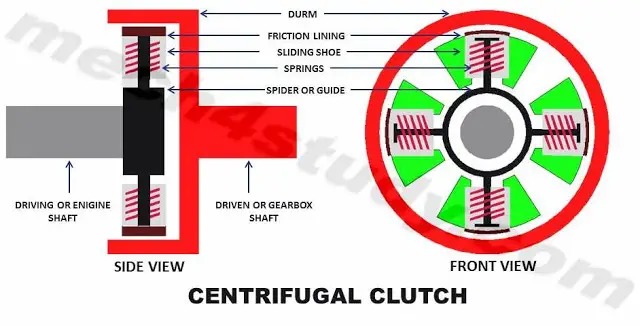
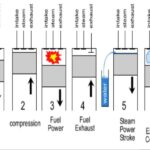
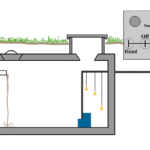
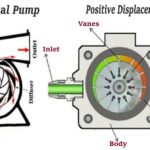
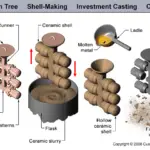

I need a notes about types of gear trains
you can check https://www.mech4study.com/2018/07/different-types-of-gear-trains-used-for-power-transmission.html